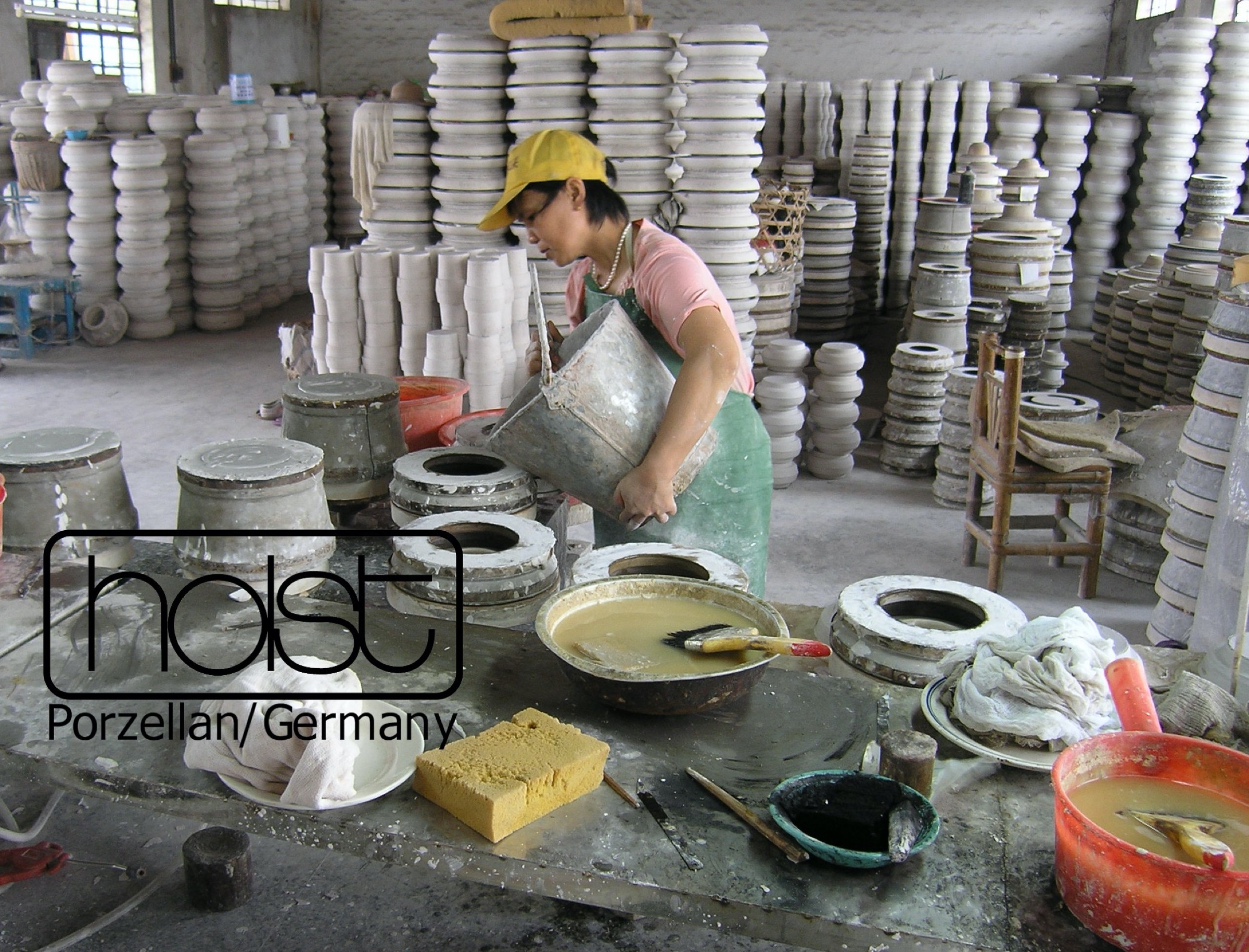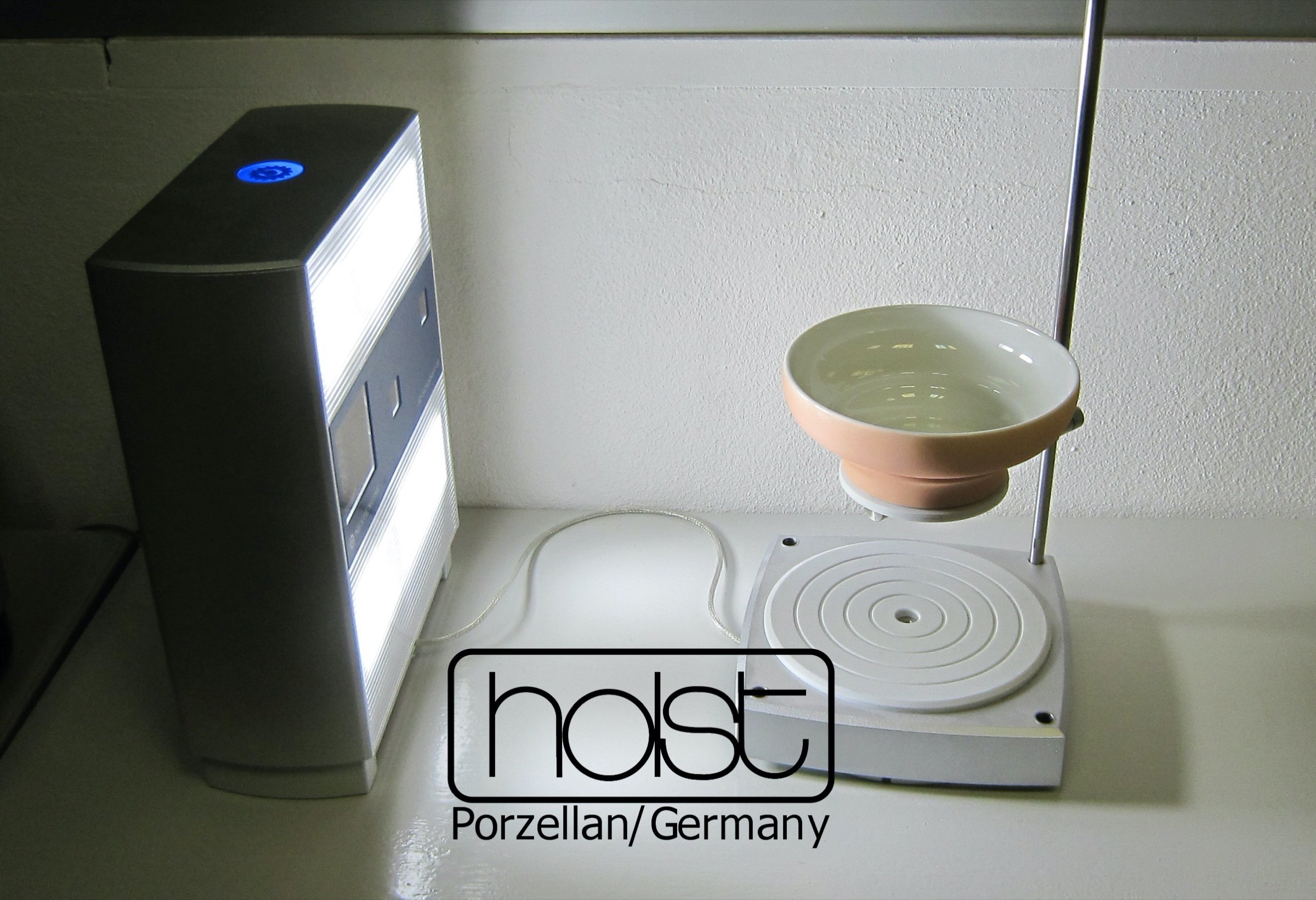Mould making
Mould making in porcelain production

If the regular and industrial porcelain manufacturers work according to roughly the same principle in the preparation of raw materials, the production of the moulds is already a significant difference between the production companies. However, the first two stages of product or mould development are usually the same for both process technologies.
- Draft as design, drawing or print sample
- Model of the design or reprint of the object
As a rule, it is only after this that the diversity of mold construction begins. On this page we show the essential differences in the production of traditional plaster moulds, as well as the production of ultra-modern press moulds for industrial porcelain production.
As you can see in our diagram above, the mould construction of the handmade porcelain production consists of three stages. The function of each form can be found in the corresponding links.
Classic mould making - the Pre mould
The so-called sample zero is then produced from this preform. This sample zero is used by the designer, developer or modeller for reworking and repairing. It is checked whether all details and proportions turn out as intended. Handles, snaps, edges and lugs are carefully marked, and ornaments and reliefs are reworked. They are scored, sanded and shaped until the zero pattern is completely in line with the product idea and specifications. Once sample zero is "approved", the preform is usually destroyed because it can no longer be used.
Classic mould making - the Mother mould
In the classic or handcrafted porcelain production, the mother mold is then cast from the revised zero sample (see video above). In the highly technical production, master molds are elaborately produced from digital data sets using CNC technology (see video below). Positive mould made. Depending on the manufacturer, this is usually made of special plastics or special synthetic resins. In industrial porcelain production, the mother mold is made of hardened stainless steel, but more about this later. The pattern maker must also take special care when making the mother mold to avoid introducing new defects into the mold due to unclean working, dust or dirt. Once the master mould has been hardened or polished, it is used to make the working moulds. The production of the mother mold is a decisive factor in determining the essential product characteristics and it helps to avoid many of the defects that will later occur in porcelain. Glass seams, unwanted edges, drains and many other details can/should/must be determined in the mother mould. This is where one of Holst Porzellan's special manufacturing competences comes into play
The digital mould making - the Mother mould
Classic mould making - Working moulds

From the mother mould the working moulds - the actual production moulds - are then produced.
Working molds are negative molds. In the handicraft porcelain production they are made as plaster moulds. Depending on the method of production of the later porcelain article, the making of the working moulds is a heavy work for which there are no machines available so far. How long such plaster moulds are used and how many pieces of porcelain can be made with them, can be read in our section Half life.
The industrial mould making
Mould making for state-of-the-art isostatic presses and production lines is very different from mould making in traditional porcelain production. It combines scanning technology, CAD planning and CNC mould making.
The advancing industrial development reached the porcelain industry already in the early 1980s. The Netzsch company, in cooperation with Hutschenreuther AG, built the first isostatic press in the early 1980s. The production of the moulds for this ultra-modern type of porcelain production is far more expensive and complicated than the mould making in traditional porcelain production.

Here, digital scanners do the work of the model setter and convert a porcelain body into a data record within a few minutes. The software is already able to calculate the shrinkage exactly. Using CAD technology, the digital scan can be varied, modified or altered. If a model is desired, it can be produced on a 3-D printer. Once the design has been approved, all that is created is a data record on a CD or other data carrier.
